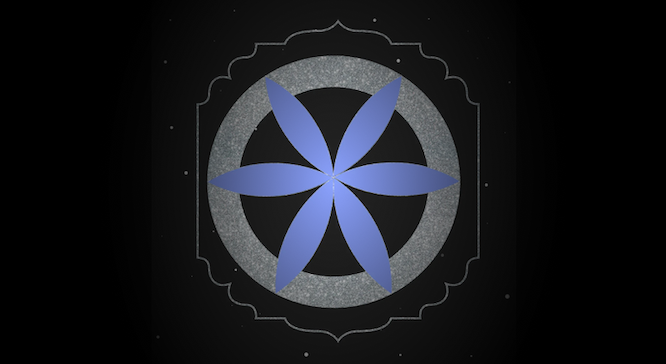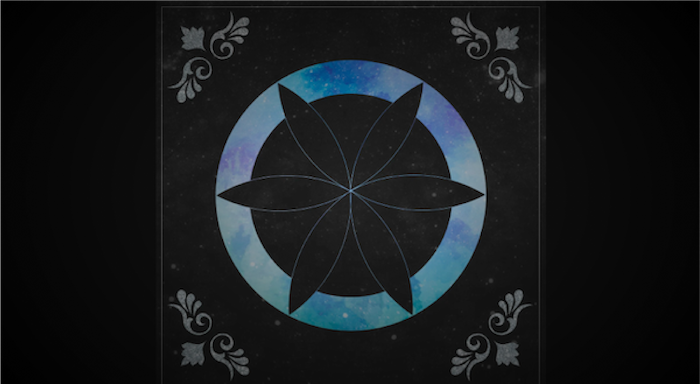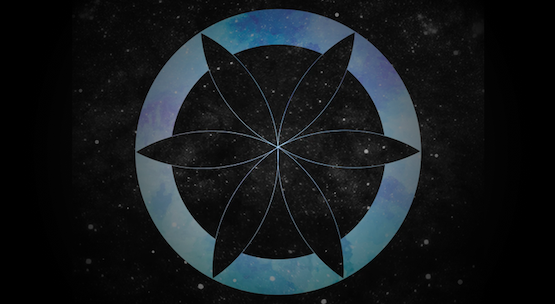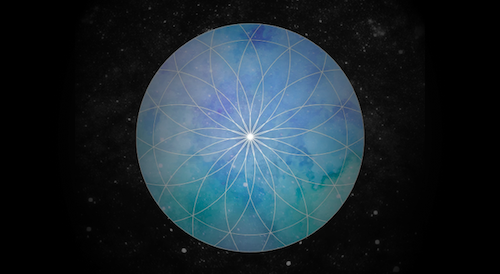What Is Vedic Astrology?

Vedic astrology is the tradition of astrology that emerges out of India and, in the east, it is known by the Sanskrit word Jyotiṣa. Jyoti means light, and Jyotiṣa is the sacred art and science of the lights in the sky, as well as the light of awareness within. There is much to unpack with your Vedic astrology chart, or what is also known as Indian, Hindu, or Tantric astrology. This branch of astrology encompasses all of the different systems of divination taught and practiced in India.
Who Invented Vedic Astrology?
Thousands of years ago, Vedic astrology was intuitively perceived by ancient mystics, who also developed various techniques of meditation and yoga. The earliest written records of Vedic astrology date back more than 5,000 years, but it is generally understood that the secrets of this ancient science were handed down orally through family-based lineages from much earlier times.
The original practitioners of this science were both expert astronomers and sages awakened to their own nature. For thousands of years Vedic astrologers observed the night sky, mapped the heavens, and accurately plotted the movements of the planets along with the qualities associated with various astrological elements.
The word “vedic” originates from the word “veda,” which means “knowledge, or insight.” This refers to the true knowledge by which all other knowledge is known—the wisdom of knowing our nature and place in the dance of life. The ancient seers composed four sets of hymns called the Vedas, which are an expression of various subjects that include philosophy, yoga, meditation, healing, and astrology. This body of wisdom was intended to support human beings in their search for peace, harmony, joy, and fulfillment. Vedic astrology, a limb of the Vedas, is considered to be “the eyes of the Veda,” which helps us see our life path clearly and our place in the larger flow of life.

What is the Difference Between Vedic Astrology and Western Astrology?
The foremost difference between Western astrology and Vedic astrology is how the position of the planets are measured along the belt of the stars called the zodiac.
Western astrology employs what is known as the tropical zodiac, which is based upon the seasons and fixes the beginning of Aries at the time of the Vernal Equinox. Essentially, this system takes the first day of spring (around March 21), as the entrance of the sun into the first degree of Aries—regardless of where the sun actually is against the backdrop of the sky.
Vedic astrology instead uses the sidereal zodiac, which corresponds to what is observable and measurable in the sky (“sidereal” etymologically is based on the root sider-, or “star”). The sidereal zodiac is star-based, and measures the actual astronomical position of planets against the backdrop of the fixed-star constellations. In this system, the sun’s entrance into Aries is marked by the sun passing through the observable fixed stars of the constellation of Aries.
What is the difference between the tropical and sidereal zodiacs? While these two measurements of the sky coincided more than 2,000 years ago, a difference in measurement has accrued since then of about 24 degrees. This difference is caused by a phenomena called the “precession of the equinoxes,” which makes it so that the point of the vernal equinox drifts back slowly in relation to the fixed stars. Two millennia ago, the two zodiacs overlapped, while now there is almost one entire zodiac sign of variance between them!
How Do you Know Your Vedic Sign?
Due to this difference between the two zodiacs, it is usually surprising for most people to find out that their ascendant, sun, moon, and other planets are often not in the same signs that they have become familiar with through years of reading the horoscope in newspapers and publications. This does not mean that everything you’ve learned about yourself through the lens of Western astrology is invalidated! Your Vedic sign and chart are simply another perspective to bear in mind on your multi-faceted, astrological experience. Each astrological system has its own coherence, and its own strengths.
So, What Is My Vedic Sun Sign?
According to Vedic astrology and the sidereal zodiac, these are the Vedic signs that you were born under.
Vedic Zodiac Sign Dates:
- Aries (Meṣa): April 13-May 14
- Taurus (Vṛṣabha): May 14-June 14
- Gemini (Mithuna): June 14-July 16
- Cancer (Karka): July 16-August 16
- Leo (Siṃha): August 16-September 16
- Virgo (Kanyā): September 16-October 16
- Libra (Tulā): October 16-November 16
- Scorpio (Vṛścika): November 16-December 15
- Sagittarius (Dhanuṣa): December 15-January 14
- Capricorn (Makara): January 14-February 13
- Aquarius (Kumbha): February 13-March 14
- Pisces (Mīna): March 14-April 13
Ultimately, what this means depends on the rest of the Vedic astrology chart and is best explored with a competent astrologer.
What Types of Branches of Vedic Astrology Are There?
Vedic Astrology is made up of six branches:
- astronomical observation and calculation
- natal astrology (through the Vedic astrology birth chart)
- horary astrology (the answering of questions without the use of a natal horoscope)
- electional astrology (the selection of appropriate times to perform an action or begin an event)
- omenology (the interpretation of the language of omens)
It is a science that requires technical understanding of the subject and also thorough grounding in Indian philosophy and mythology.

How Does Vedic Astrology Work?
The tradition of Vedic astrology is practiced today in similar ways as it has been since ancient times. One noteworthy difference is that nowadays, there is much more emphasis placed on the interpretation of the Vedic astrology birth charts. Originally, this system of astrology principally dealt with the timing of rituals and other social functions. Natal chart interpretation is what we think of when we hear the word astrology, and it involves the exploration of life’s important themes—such as character and nature, health, family of origin, relationships, marriage, education, profession, finances, property, children, travel, and spirituality.
The philosophy that informs Vedic astrology includes important knowledge about the laws of karma: why we act; the kinds of traces our actions leave in the world; how our actions are an expression of our conditioning; how our conditioning can be of varying intensities or strengths; the relationship between fate and freewill; the mechanism by which suffering arises; how suffering can be reduced, and how the process of spiritual development unfolds to reveal our nature as pure consciousness. The interpretation of your Vedic birth chart is a way to shine a light on your conditioning so that you may ultimately act with more awareness. The chart becomes a mirror to see ourselves and our place in the world more clearly.
How to Read Your Vedic Astrology Chart
The Vedic astrology chart is a map of the sky at a person’s time of birth, and it tracks the placement of the planets against the backdrop of the celestial sphere of the constellations. A basic Vedic birth chart includes the following elements: the directions (including the ascendant), the planets (grahas) and their position, the constellations (rāśis), and the houses (bhāvas). The system employs a 12-house system in which each house signifies many themes (similar to the houses used in Western astrology), which cumulatively encompass all of life’s themes. While Western and Vedic astrology both use 12-house systems, it’s important to note that reading the charts and the ways the charts are set up do vary.
The basic elements of Vedic astrology charts are presented in one of two particular styles: the North Indian chart style and the South Indian chart style. The North Indian chart is a house-based chart, which means that the houses always stay in the same position and the constellations move according to the birth time. The South Indian chart style, instead, is constellation-based chart, which means the position of the constellations do not change, and the planets and houses are placed according to the birth time.
Another distinguishing characteristic of Indian astrology is that it is equally based on the sun and on the moon. It is soli-lunar. Western astrology mostly defaults to the sun being the main marker in the sky. When somebody asks, “What’s your sign?” they are asking about the placement of your sun at the time of birth. Have you ever wondered how it’s possible to see the position of the sun with respect to the stars since we can’t observe the stars when the light of the sun is shining?
It turns out that the sun’s placement can only be inferred from the placement and phase of the moon! When the moon is full, the sun is 180° across the zodiac. The moon therefore plays a pivotal role in deciphering the patterns of the sky and continues to be very relevant, especially in Vedic astrology. In India, this is so much so, that rather than asking, “What’s your sign,” it’s customary to ask “What’s your nakṣatra?”—which asks about the lunar mansion that one’s moon is in at birth.
What Is a Lunar Mansion?
The 360-degree star belt of the zodiac, which is divided into 12 with 30-degree zodiac signs can also be alternatively subdivided into 27 smaller star patterns known as nakṣatras, or lunar mansions. Ancient astrologers looked up to the night sky and tracked the distance traveled by the moon from one night to the next night (which is approximately one lunar mansion) and they recorded the energetic qualities of these segments of the sky. Lunar mansions are heavily used in Vedic natal and electional astrology to this day.
What Planets Are Used in Vedic Astrology?
Vedic astrology is a system that uses nine planets in interpretation. Because this type of astrology evolved thousands of years before the invention of the telescope, it traditionally only charts those objects in the sky that are visible to the naked eye. This includes the five traditional planets (Mercury, Venus, Mars, Jupiter, and Saturn), and the two luminaries (sun and moon). Additionally, Vedic astrology also utilizes the moon’s nodes, known as Rāhu and Ketu, which are accorded the status of planets.
Western astrology on the other hand employs additional planets in the solar system, which are only observable through the telescope—the outer planets: Uranus, Neptune, and Pluto. Also, many Western astrologers use several asteroids in their interpretations that are not used in Vedic astrology: Pallas, Athena, Juno, Vesta, and Chiron.
Vedic astrology also has the ability to fine-tune chart analysis through the use of 20 divisional sub-charts known as āmśas. These are harmonic divisions of the zodiac and the planetary placements within those divisions. Divisional charts help glean further insight into specific areas of one’s life such as relationships, money and success, health themes, education, children, parents, challenges, and more. These are used for specific timing of events in those areas of life.

Is Vedic Astrology Accurate?
One of Vedic astrology’s unique features is the ability to accurately time planetary periods (daśās). Based on the moon’s position at birth, it is possible to identify what planet is ruling and therefore most active at any given point in time of a person’s life. This allows prediction to focus on what effects may manifest by that planet in the natal chart, which includes a planet’s placement by sign and by house, the aspects it is involved in, as well as the combinations (yogas) it is involved in. The knowledge of what is activated in a natal chart by planetary period is then further combined with the information provided by transits (what the current motion of planets in the sky is relative to the original birth chart) to further interpret a chart.
Profound, vibrant, and timeless, the wisdom of Vedic astrology is gaining ever more popularity in the world as a tool for a deep understanding of the patterns of time and space. It reveals the ways in which we restrict the energy of unlimited love and awareness, and lights the path toward greater acceptance, authenticity, and harmony in our lives.
Get a FREE, 3 minute Astrologer chat. Connect now.



